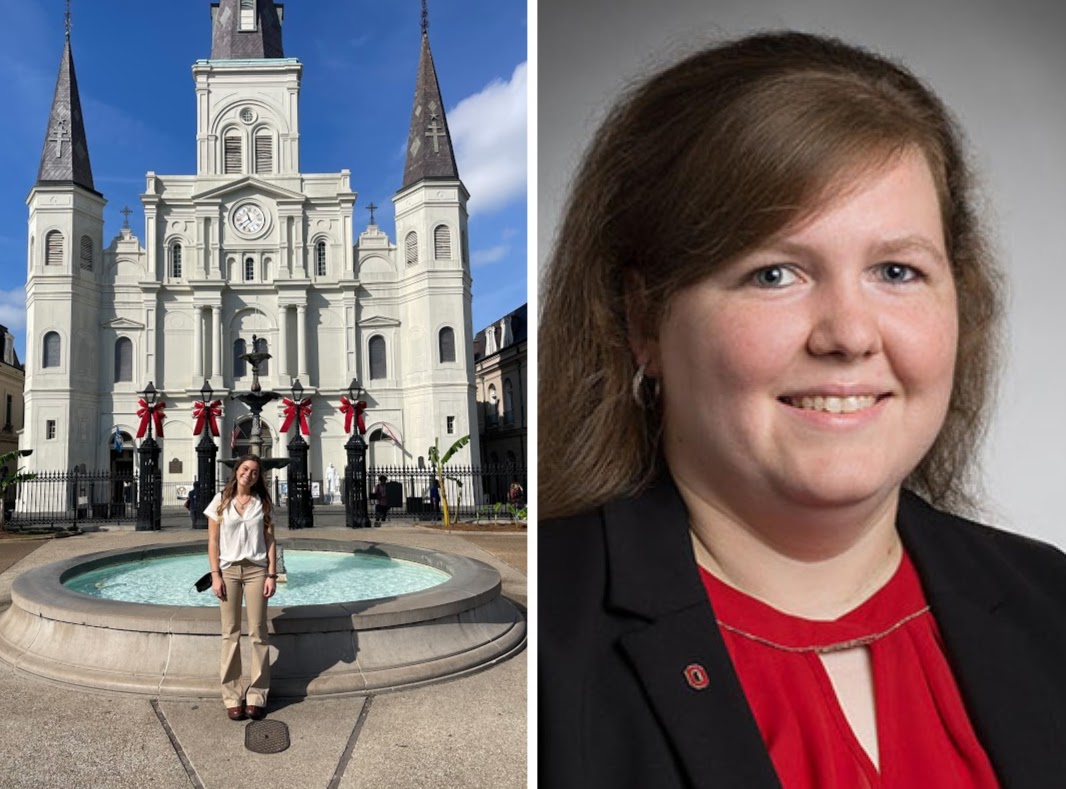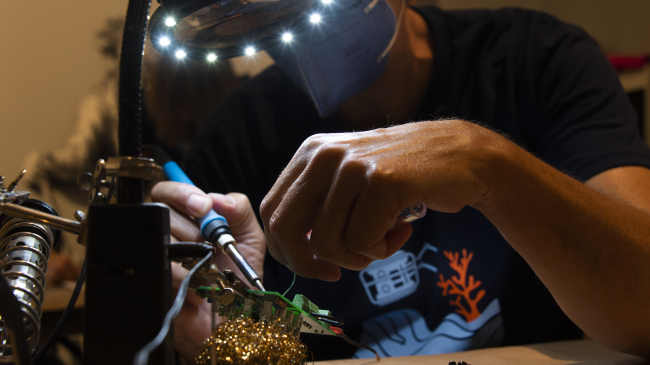Read all
More stories in Goal 3
As the nation’s leader in climate science, NOAA works to deliver the best climate products and services to the public. When the Biden-Harris Administration released executive orders on climate change and a call for a robust all-of-government response, NOAA’s Climate Program Office (CPO) undertook a project to inventory the work of federal programs related to climate education, engagement, workforce development, and training.
Read all
More stories in Goal 3

“We realized that other federal agencies and nongovernmental organizations had an abundance of climate program activities, but there wasn’t much coordination,” said Frank Niepold, Senior Climate Education Program Manager and Coordinator at CPO. The goal of this inventory was to increase the collective impact of the federal government through climate-related engagement and capacity building programs. To help accomplish this, CPO turned to William M. Lapenta interns.
It was cool to start a novel thing and get a chance to look at this broad cross-agency effort that people had not looked at and compiled before.
The Lapenta internship offsite link provides a 10-week paid summer internship for undergraduate and graduate students to gain research and operational experiences in NOAA fields. Jackie Beck, Quinn Bustos, Lauren Crane, and Nicole Hilton were excited to be working with CPO on a new project that’s never been done before.
“It was cool to start a novel thing and get a chance to look at this broad cross-agency effort that people had not looked at and compiled before,” said Crane, a master’s student at the University of Michigan and a 2021 Lapenta intern. Crane and her fellow interns were the first to tackle the inventory. “The first step was to look at the language and get everyone on the same page on what ‘climate access’ and ‘climate information’ are. We also had to get working definitions of climate equity, interracial equity, and so on,” said Crane.
Once they had established their definitions, each intern got to work identifying and categorizing all the climate-related resources across federal departments and agencies. One intern looked through programs that touched on climate justice, while another looked at career training and education. The process involved meeting with and interviewing program managers to understand their current efforts and the history of the program. Crane and her fellow interns identified many areas where programs shared similar goals and could potentially benefit from collaborating and coordinating.
After Crane and her fellow interns finished their Lapenta internship, Beck came in to continue the work. “I took the paper that previous interns put together and evaluated methods from their process and applied them to the second round of searching for programs to be part of the inventory,” said Beck, a Ph.D. student at The Ohio State University and a 2022 Lapenta intern. She made sure that all the programs that Crane and the previous interns found were still running and searched for new ones to potentially add to the inventory.
Together, the interns identified more than 500 programs across different federal agencies that do or could do climate-related engagement and capacity-building work. Although categorizing and gathering information on so many programs proved to be challenging, everyone working on the project was excited to see the growing list of resources and opportunities that were available to the public. Niepold remarked, “As we developed the inventory, we were impressed with the diversity and quantity of federal programs to build communities' capacity to implement climate solutions.” In addition to inventorying programs, this project provided some opportunities to make immediate improvements and connections across programs. “We said, ‘It seems like you do education, but we’re unsure of that because your website doesn’t say,’” said Crane, “And they would thank us for the feedback because they didn’t realize that was unclear. Program leads felt like their program’s work was being recognized, and they valued the feedback a lot."
To ensure that the programs were being accurately represented and categorized, representatives from across federal agencies reviewed the growing list and provided input. This team was part of the Climate Engagement and Capacity Building scoping effort to build a new Interagency Working Group at the U.S. Global Change Research Program. This new group is currently being formed as part of the effort for a wide range of federal agencies to better coordinate on climate engagement and capacity building that includes education. The working group will be formally established in early 2023.
My hope is that it will bring people together to collaborate and that we become a climate informed society as a whole.
Since the inventory was created and refined, it has now been published in multiple United States National Communication Biennial Reports to the United Nations Framework Convention on Climate Change offsite link. In addition to the UN reports, the results of the inventory are being used to guide federal collaborations on climate literacy, climate training, and climate workforce development to build a climate ready nation. "Everyone was very excited about the inventory, and almost every agency had a representative that looked through it and helped refine it,” said Beck. “My hope is that it will bring people together to collaborate and that we become a climate informed society as a whole.”




